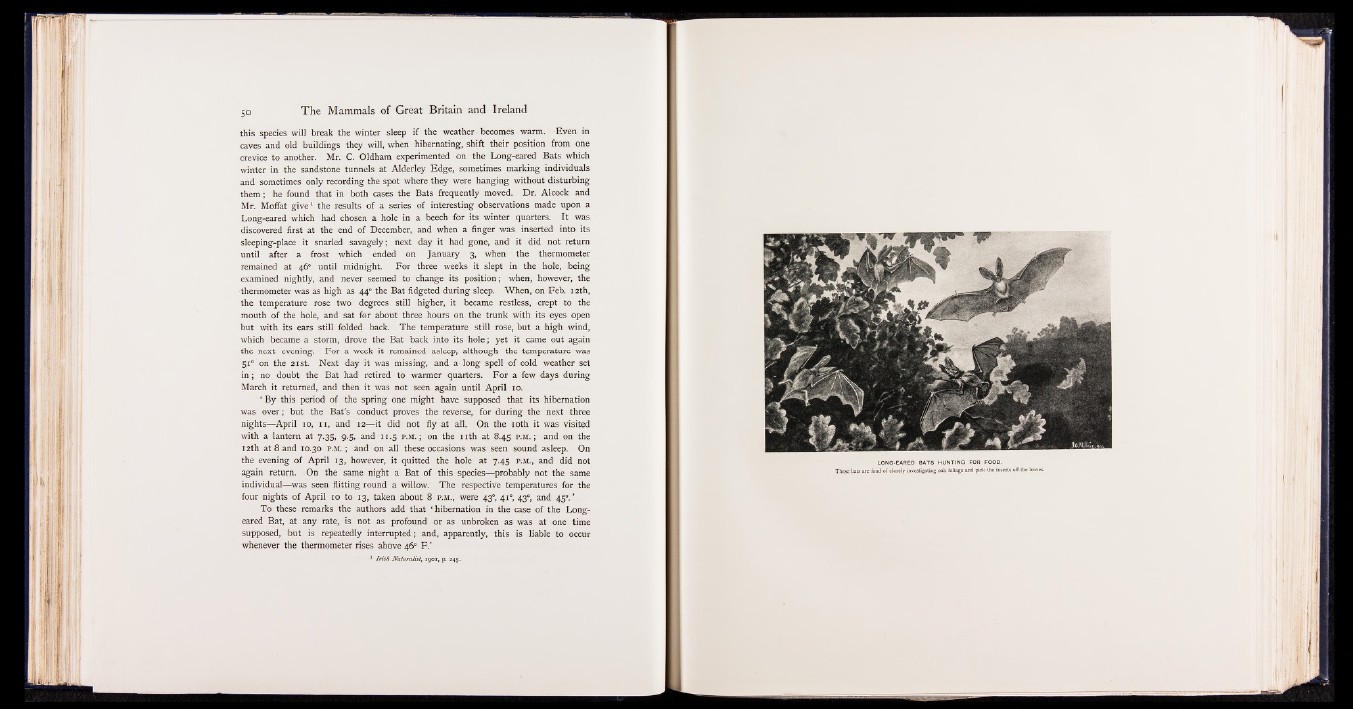
this species will break the winter sleep if the weather becomes warm. Even in
caves and old buildings they will, when hibernating, shift their position from one
crevice to another. Mr. C. Oldham experimented on the Long-eared Bats which
winter in the sandstone tunnels at Alderley Edge, sometimes marking individuals
and sometimes only recording the spot where they were hanging without disturbing
them; he found that in both cases the Bats frequently moved. Dr. Alcock and
Mr. Moffat give1 the results of a series of interesting observations made upon a
Long-eared which had chosen a hole in a beech for its winter quarters. It was
discovered first at the end of December, and when a finger was inserted into its
sleeping-place it snarled savagely; next day it had gone, and it did not return
until after a frost which ended on January 3, when the thermometer
remained at 46° until midnight. For three weeks it slept in the hole, being
examined nightly, and never seemed to change its position; when, however, the
thermometer was as high as 440 the Bat fidgeted during sleep. When, on Feb. 12th,
the temperature rose two degrees still higher, it became restless, crept to the
mouth of the hole, and sat for about three hours on the trunk with its eyes open
but with its ears still folded back. The temperature still rose, but a high wind,
which became a storm, drove the Bat back into its hole; yet it came out again
the next evening. For a week it remained asleep, although the temperature was
510 on the 21st. Next day it was missing, and a long spell of cold weather set
in ; no doubt the Bat had retired to warmer quarters. For a few days during
March it returned, and then it was not seen again until April 10.
‘ By this period of the spring one might have supposed that its hibernation
was over; but the Bat’s conduct proves the reverse, for during the next three
nights— April 10, 11, and 12—-it did not fly at all. On the 10th it was visited
with a lantern at 7.35, 9.5, and -11.5 p.m. ; on the n th at 8.45 p.m. ; and on the
12th at 8 and 10.30 p.m. ; and on all these occasions was seen sound asleep. On
the evening of April 13, however, it quitted the hole at 7.45 p.m., and did not
again return. On the same night a Bat of this species— probably not the same
individual— was seen flitting round a willow. The respective temperatures for the
four nights of April 10 to 13, taken about 8 p.m., were 430, 410, 430, and 45°.’
To these remarks the authors add that ‘ hibernation in the case of the Longeared
Bat, at any rate, is not as profound or as unbroken as was at one time
supposed, but is repeatedly interrupted; and, apparently, this is liable to occur
whenever the thermometer rises above 46° F.’
1 Irish Naturalist, 1901, p. 245.